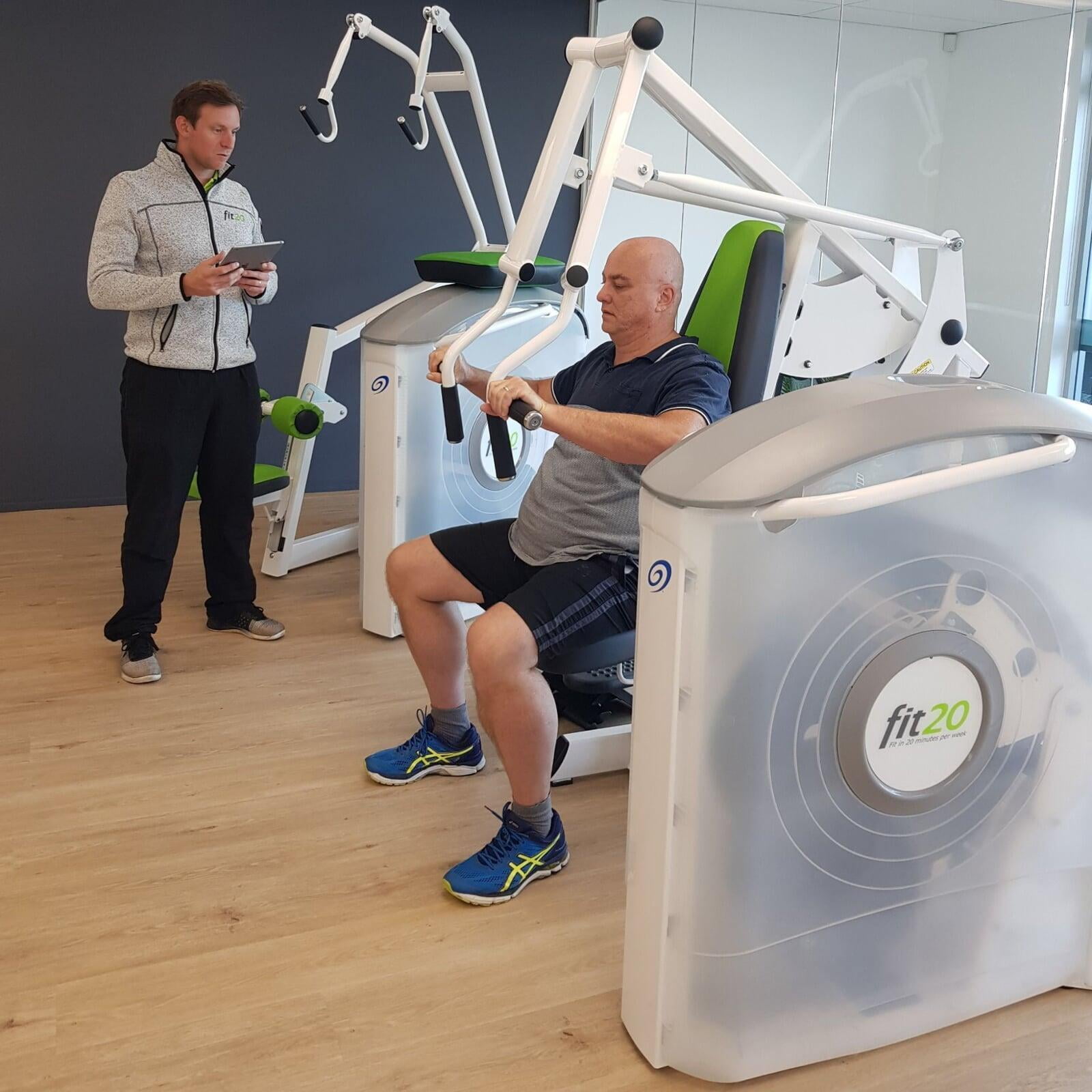Week 5: Why it's good to do
strength training super slow
Usually, when you feel pain, your instinctive reaction is to put some distance between yourself and the source of that pain – to flinch reflexively – and this instinctive response, I suspect, can be a problem when putting yourself through a strength workout.
If all you have to do is give your all
When the workout is working, the muscles burn. It hurts, so we immediately look for ways to get away from the pain. It’s a natural and normal thing to do.
If you go to any gym and watch some of the people training with weights you’ll notice they do these reflex things, like jerking the weight up, speeding up repetitions (let’s just get this over with), resting at the top of the repetition, or adjusting their posture to take the pressure of the muscles they’re working.
The thing with fit20’s high intensity training is that the workout literally happens in slow motion.
New Zealand Master Personal Trainer James Miller slowly counts to 20 during each repetition, so there’s no rushing it, and there’s plenty of time for him to notice your posture – or other compensations – and bring you back to proper form.
Of course, it burns. I could go so far as to say it is painfully slow (pun intended), but then what’s the point of doing anything if you aren’t going to do it properly? At least in this way I know that:
1. I am being helped to give my best;
2. I am less likely to do myself an injury because I maintain good posture;
3. The strength gains I make are real and not due to compensating;
4. Super slow gets your heart rate up to maximum.
fit20’s workouts feature super slow repetitions, but the workouts themselves take just 20 minutes – just once a week – which is a win.
To the uninitiated or even fanatical fitness geeks, this may sound ridiculous but the science is solid. High intensity training for between 20 and 30 minutes once a week is all you need to do – it’s the intensity that counts.
From my research, super-slow reps work because they maintain continuous tension, which ‘recruits’ all your muscle fibres and motor units into the movement. There are aerobic benefits too because your blood and oxygen circulation speeds as your body tries to fuel the constant strain.
If all you have to do is give your all – every ounce of effort for 20 minutes to reap all these benefits, why wouldn’t you try your absolute best?
Colin Kennedy
July 03 2018


